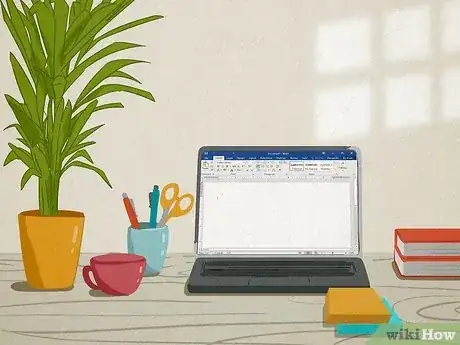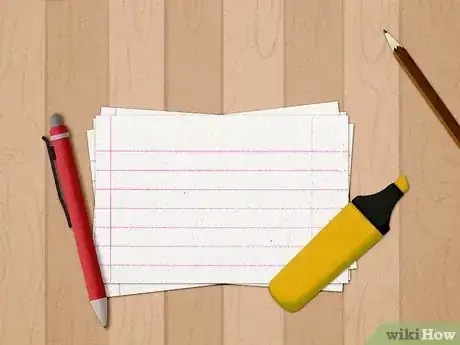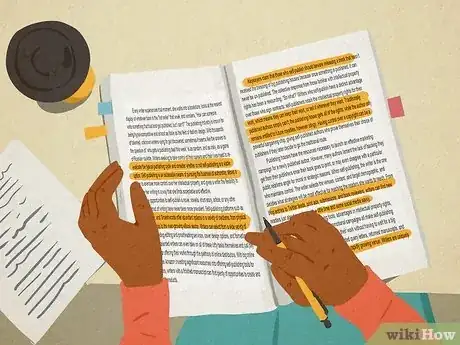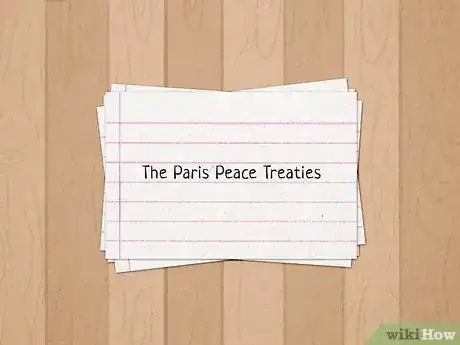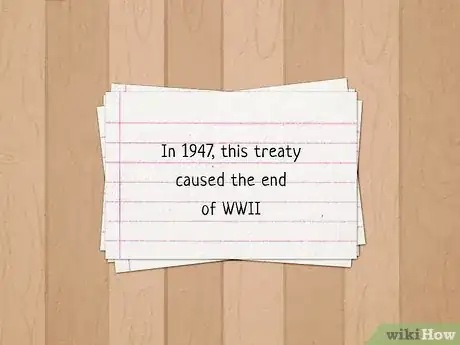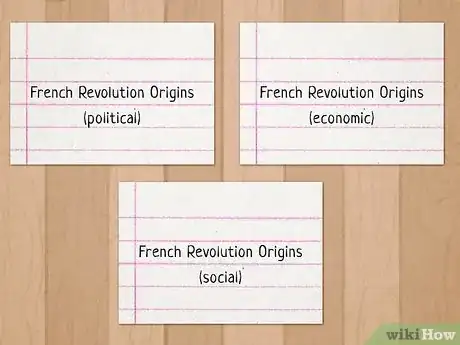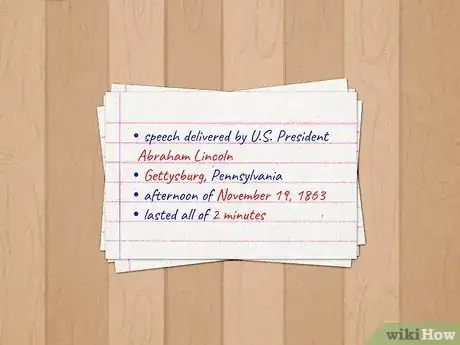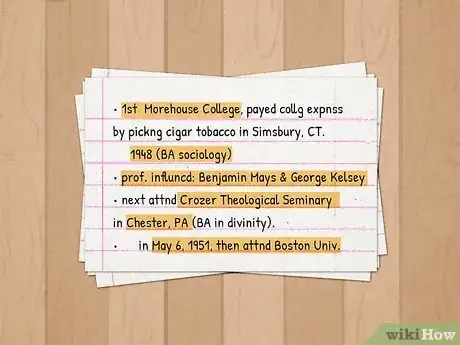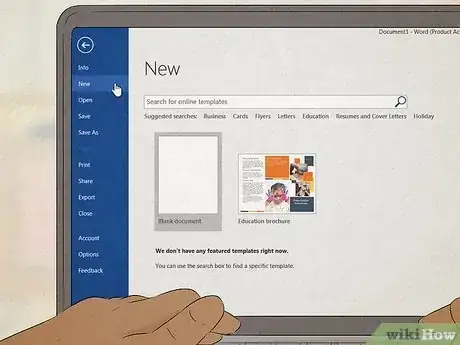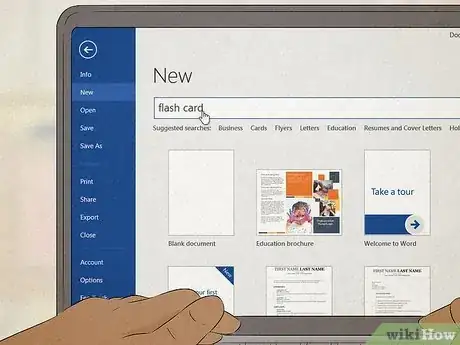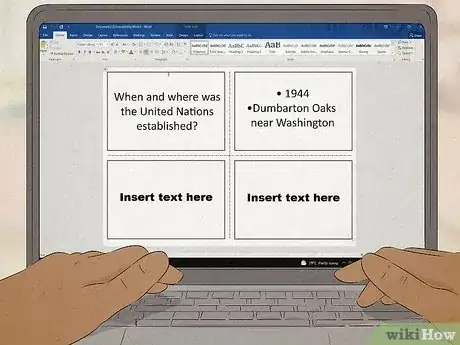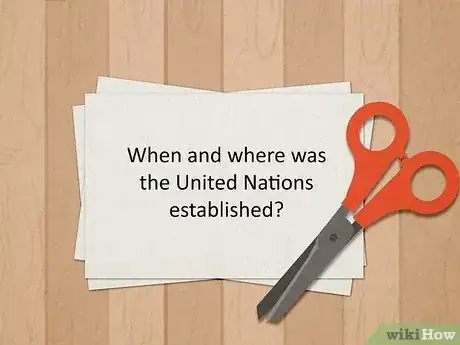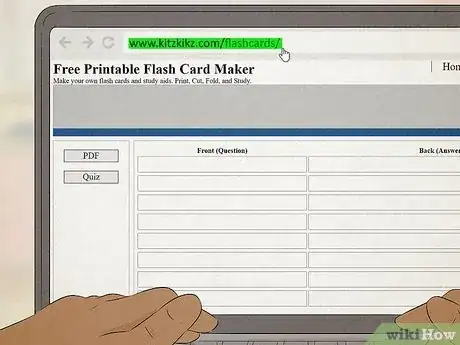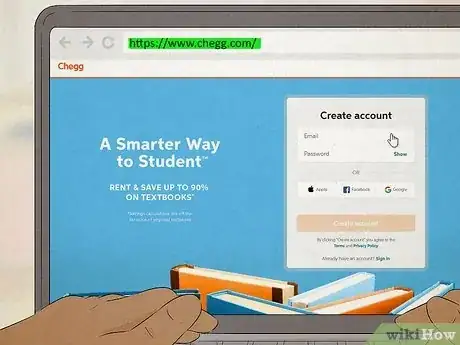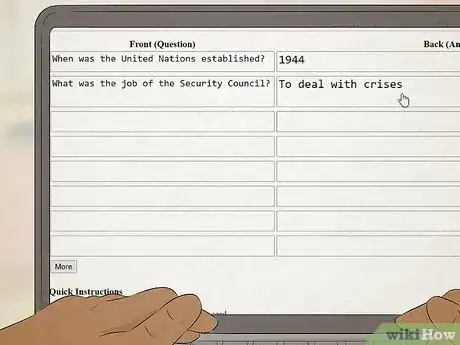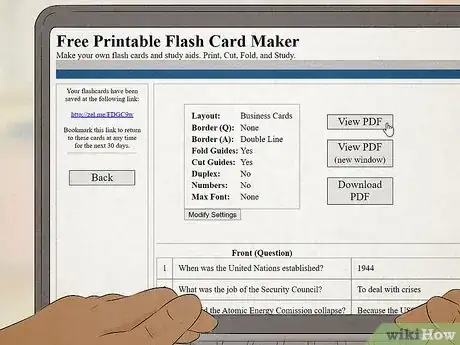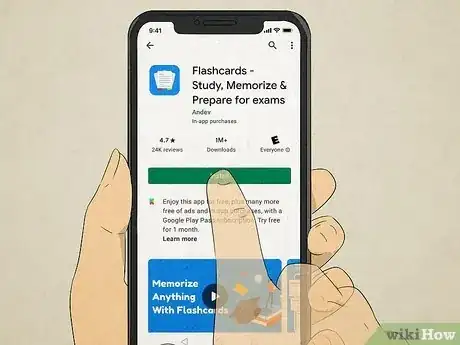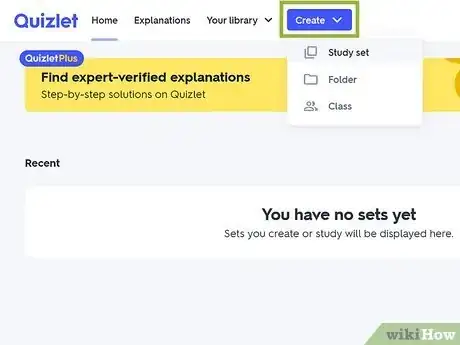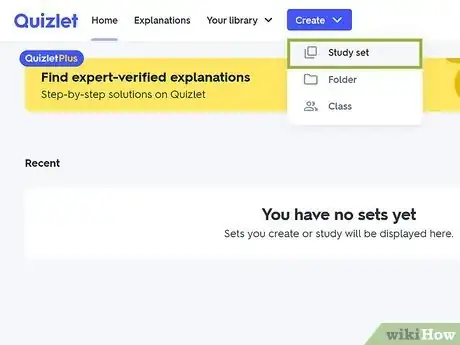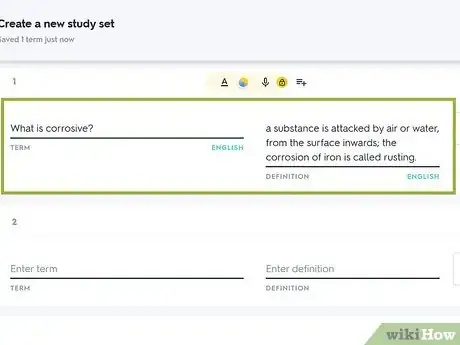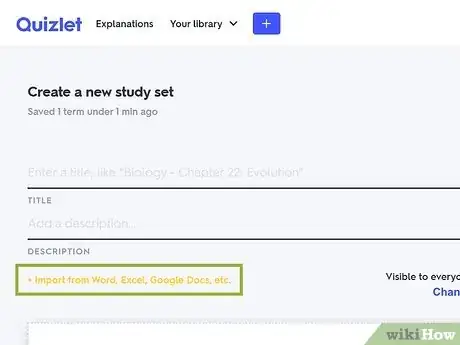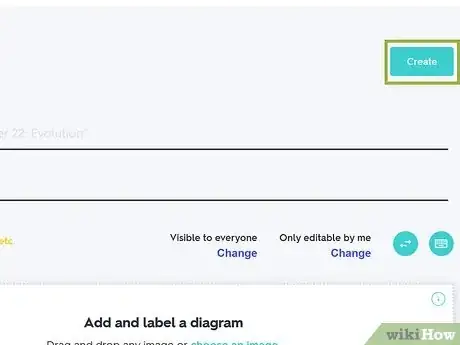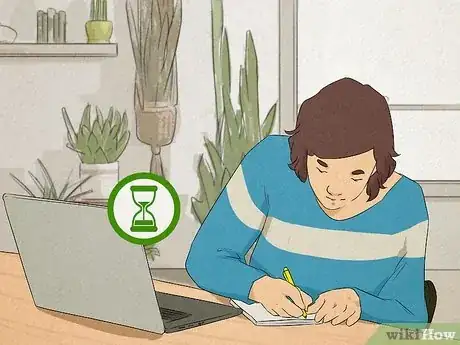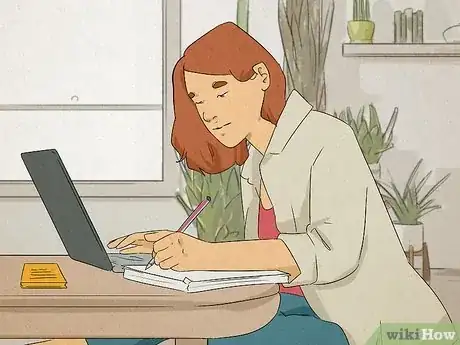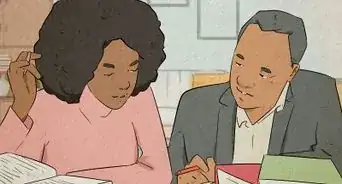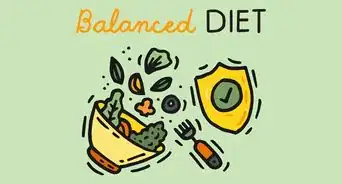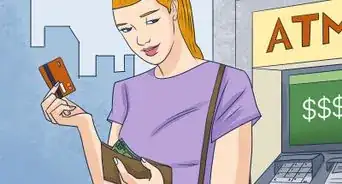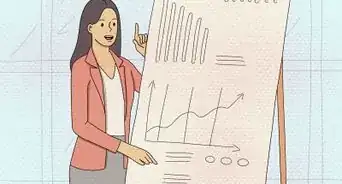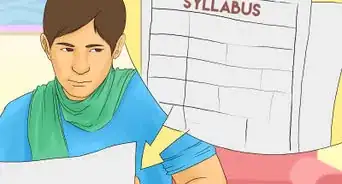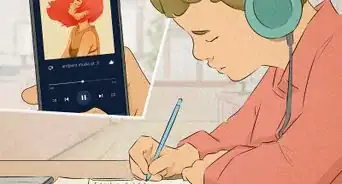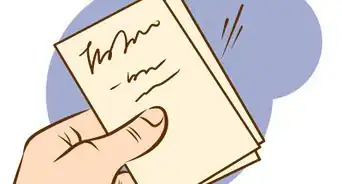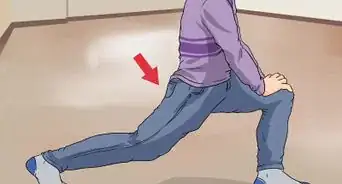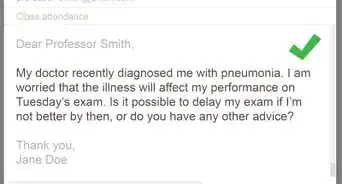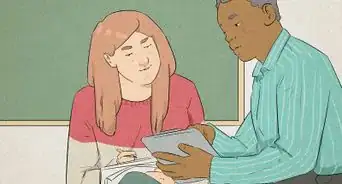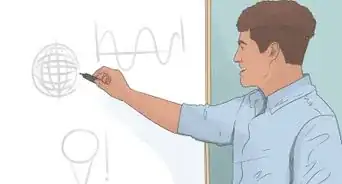This article was co-authored by Megan Morgan, PhD and by wikiHow staff writer, Jessica Gibson. Megan Morgan is a Graduate Program Academic Advisor in the School of Public & International Affairs at the University of Georgia. She earned her PhD in English from the University of Georgia in 2015.
There are 11 references cited in this article, which can be found at the bottom of the page.
wikiHow marks an article as reader-approved once it receives enough positive feedback. This article received 24 testimonials and 89% of readers who voted found it helpful, earning it our reader-approved status.
This article has been viewed 569,199 times.
Want to make some killer flash cards? Using flash cards can be a great method to finally memorize the periodic table, understand the intricacies of the human anatomy, and learn vocabulary words. You can make flash cards for nearly any subject. In order to make flash cards, you’ll need to get your materials together, identify key information, and then physically make them.
Steps
Preparing to Make Flash Cards
-
1Find a place to work. Have a well lit working area where you are away from distractions and have all equipment ready. You want to devote your entire attention to your flash cards. Some people enjoy having a television on in the background or have music playing. If this is you, feel free to enjoy your preferred auditory stimuli, just make sure that they don’t distract you from your task.[1]
-
2Collect your materials together. This means that you should have your flash cards and textbook ready. Have a good pen, markers, highlighters, and whatever other writing implements you’d like to use.
- At this stage, you’ll also need to decide what medium you want to use to make your flash cards. Will you choose paper and pen or will you create digital flash cards? Ultimately, it is a matter of preference. Studies have shown that most students retain information better if they have to write out the materials.[2] Yet, the convenience of having your flash cards on your phone may outweigh other concerns.
Advertisement -
3Highlight the most important information. Identify salient information in your notes and text book. Distill them down into their key parts so that you can transfer them to your notecards — in a physical or a digital form. You can do this by highlighting your notes or the textbook. If you cannot write in your textbook, write on a separate sheet of paper or create a separate file in a word processor on your computer.
- Eventually, you will develop a system of note-taking that will make flash cards easier to make. Some of the easiest ways of doing this are to highlight or underline key sections your teacher stresses. Some people use asterisks, dashes, or other symbols to set off important text from the rest of their notes.
Making Paper Flash Cards
-
1Write the key term or concept on one side of the flash card. Write it in large letters so it will be easy for you to read. You don’t want to include any of the key information on this side. The point of flash cards is to see a basic concept and then be able to identify pertinent information about that topic. If your teacher has given you key questions to consider, you might just write out the question on this side. Keep this side of the card as simple as possible.
-
2Write short, concise notes on the other side of the flash card. Your goal is to distill the key information on this side of the notecard. Don’t rewrite a professor’s entire lecture on Mongolian agrarian reform or bicameralism. Take the most important points your professor emphasizes and bullet point them on the notecard.
- Write with pencil or light ink so that this information doesn't bleed to the other side of the card.
- Draw diagrams if you need to. Don’t be afraid to include additional information on the back of your notecards, as long it is essential information to the studying process.
-
3Make sure your writing is large, clear, and well-spaced. If your writing is small, you will not be able to read it easily and if it's crowded you will have too much to take in at one time. Writing clearly will enable you to read your notes easily.
- If you find yourself including too much detail on your notecards, either try to distill it further or break it up into several notecards. In this case, you can place the key word on the first side with some kind of qualifier in parentheses. For example, if you wanted to remember the causes of the French Revolution, but couldn’t condense it onto a single card, you might make several cards. “French Revolution Origins (Political)”, “French Revolution Origins (Social)”, and “French Revolution Origins (Economic)” might be possible cards for this subject.
-
4Write in bright colors. Colors are your friend. Feel free to color code particular information. For example, if you are studying for a French verb test, you might write the infinitive verb on one side of the card and then on the other, you could write the definition in black and then the conjugated forms in a different color. Get creative. Color can be used to help further organize the salient information on the flash card. Just make sure that you can still read it. Yellow ink on a yellow flash card won’t work.
-
5Use shorthand to save space. Sometimes, you might have a lot of information on a single flashcard. In this case, you might consider adopting a form of shorthand. Most people develop their own that makes sense to them. In general, people use shorthand to highlight essential information and de-emphasize non-essential words. Turn “and” into “&” and “for example” into “e.g.”.
Making Flash Cards on MS Word
-
1Open Microsoft Word and start a “New” document. No matter what version of Word you are using, you’ll need to open the program first. Then you’ll want to click on the “New” file button. This is found in the top bar.[3]
-
2Choose a flash cards template. You can do this in two different ways. There is a search bar. Type “flash card” is that search bar and the template will appear. Or you can go and find the “flash card” template amongst all the other templates provided in MS Word. Typically, there are several different flash cards templates to choose from. Some are more colorful than others. Some are plain white. Some have decorations. Choose the one that is the most appealing to you, but keep in mind that your flash cards should be easy to read. If some sort of decoration or color makes them difficult for you to use, you’ll want to avoid that template.[4]
-
3Fill them out with the necessary information. Each template will tell you where the key term, concept or question should go and where you should put the necessary information.[5]
- Use color to organize your notecards further. Simply highlight the text that you’d like to recolor and then click on the text color tab at the top of your program. Use a color that is still easy to read, but distinguishable from the other color that you’re using. For example, use black for the primary information and green, blue, red, purple, or brown for subsequent particulars on the same card.
-
4Print out and cut up the flash cards. Flash cards won't help you much if they're stuck on your hard drive. Print them out on sturdy cardstock and cut them apart.
- You can punch a hole through one corner and string cards on a ring to keep them together. Then you can just flip through them as needed.
Using Online Software or Apps to Make Flash Cards
-
1Choose an online flash card creator. There are several to choose from. Some will even let you download their program to use offline. Several sites like cram.com, http://www.flashcardmachine.com, and http://www.kitzkikz.com/flashcards/ are great free resources.[6]
-
2Create an account if prompted. Many online note card creation programs require you to create an account. This is essential so that you don’t lose the information you’ve put in. By creating an account, you’ll be able to access your flash cards from any computer with an internet connection. This means that you’ll be able to look at them on your desktops, laptops, and smartphones.
-
3Insert all the relevant information. Each site has a place for the key term, concept, or question and then another place for the important information. Some websites like cram.com give you the option of personalizing the aesthetic of your flashcards — adding color or designs. Others like http://www.kitzkikz.com/flashcards/ just have spaces for the information.
-
4Finish your flash cards. Every website then has a button to click that says “create flashcards” or “process flashcards”. Click it and start using them.
-
5Choose a mobile app to make flash cards. The biggest advantage to a mobile app is that you can take your flash cards with you wherever you go. There are many mobile apps out there that can help you make flash cards. Some are even tailored by subject, such as math and vocabulary.[7]
- Most apps are free, so try out a couple to see what best suits your needs.
Making Flash Cards on Quizlet
-
1Log in to quizlet.com and click "create." You can register for a free account on Quizlet.com or log in using a social media account like Facebook or Apple. Then, click the blue "create" button on the top left menu bar.[8]
- Once you're logged in you can select flash cards from a class you're taking, or you can create your own flash cards.
-
2Select "study set" from the drop down menu. This takes you to the page where you can enter all of the relevant information you'd like on your flash cards. Enter a title for the study set so you can keep track of flash cards for several classes.[9]
- Quizlet also gives you the option to include a description in the title, so include as much information as you like.
-
3Enter the terms and definitions manually. Quizlet has a very intuitive interface, so it's easy to type your notes into flash cards. On the left column, enter the term. Then, write the definition, answer, or explanation on the corresponding field in the right column.[10]
- If you're creating flash cards for a foreign language class, Quizlet allows you to select from over a hundred different languages.
- If you'd like to adjust the font and color, include images, or add an audio feature, upgrade your account to Quizlet Plus.
-
4Import the terms and definitions if you'd like to save time. If you've already got your relevant information in a spreadsheet, simply upload them to Quizlet. Click "Import from Word, Excel, Google Docs, etc." Copy and paste the information. Then, paste the information into the import box.[11]
- You have the option of separating the terms and information using tabs or commas.
-
5Select "create" to finish making the flash cards. Scroll down once you've entered all of your information and select "create." A pop-up will appear and give you sharable links for your flash card study set. If you close out this box, you'll see your flash cards are ready to go![12]
Using Flash Cards Correctly
-
1Take your time to make flash cards. This may be the biggest “no brainer” step of all, because you need to have good information on the card if it’s going to be helpful. Try to think of making flash cards as part of the study process, not just a step that allows you to study. It is oftentimes the first foray into the study process for you. Pay close attention to the material. Try to add your own insight while you are making them. It will help you remember the information later on.
- Some researchers even think that hand-written flash cards work more effectively than those made on MS Word, with other software programs, or online. Princeton and UCLA psychologists found that information retention increases when students are forced to write it out on paper. Your brain is forced to process the new material in a different way than if you simply type it out verbatim.[13]
-
2Test yourself frequently. Don’t just make the flash cards and look them over right before a test. Reference them frequently. Set aside a chunk of study time when you won’t be disturbed. Go through the notecards methodically. Keep them at hand throughout the day and reference a couple during television commercials, when you are sitting on the bus, or waiting in line at the grocery store. Your goal is to know the entire stack backwards, forwards, and mixed up. You can only do this if you test yourself frequently.[14]
-
3Have someone test you. It doesn’t matter if the other person is in your class or not. All they have to do is be able to read to you what you’ve written on the card. Have them show you one side of the card. You then explain the material on the other side, making sure that you use key phrases.
- If you are new to the information, you might even have your study helper show you the side with the information and then you say the key word.[15]
-
4Keep your notecards until you are absolutely sure that you don’t need them. One of the biggest mistakes that students make is discarding their flash cards after the quiz or exam. Information compounds over the course of the semester and from one class to the next. If you are taking a course that has several parts, consider creating a much larger “bank” of flash cards to reference in the coming months.
Community Q&A
-
QuestionHow do I figure out which information is key to include? Can I use the internet to help?
 Community AnswerYou can use the internet, but to get the right information think about what questions might be asked on your tests or homework: dates, names, key terms, quotes, interesting facts, etc. Focus on the things you have trouble remembering.
Community AnswerYou can use the internet, but to get the right information think about what questions might be asked on your tests or homework: dates, names, key terms, quotes, interesting facts, etc. Focus on the things you have trouble remembering. -
QuestionIs it necessary to make flash cards with different colors or can I use only white cards?
 Community AnswerIt depends on what's good for you. Different colors may help you remember the material better because colors could help you remember the information more easily, but if you are more comfortable with plain white cards, you do what's best for you!
Community AnswerIt depends on what's good for you. Different colors may help you remember the material better because colors could help you remember the information more easily, but if you are more comfortable with plain white cards, you do what's best for you! -
QuestionWhat size is a good size for flash cards?
 Community AnswerMany people find 5" by 3" easiest to use, but it may vary by the amount of information you want to fit on each card. Generally, you should try to keep it short and simple, so smaller cards work just fine if you follow that principle.
Community AnswerMany people find 5" by 3" easiest to use, but it may vary by the amount of information you want to fit on each card. Generally, you should try to keep it short and simple, so smaller cards work just fine if you follow that principle.
Things You'll Need
- Pen
- Pencil
- Rubber
- Highlighter(s)
- Page Markers
- Flash Cards (Or an old cereal box cut into rectangles)
- Textbook for notes
- Brightly colored pens or pencils
- Flash card software
- Computer
References
- ↑ http://www.scholastic.com/parents/resources/article/study-skills-test-taking/space-makes-you-want-to-study
- ↑ http://www.medicaldaily.com/why-using-pen-and-paper-not-laptops-boosts-memory-writing-notes-helps-recall-concepts-ability-268770
- ↑ http://rasmussen.libanswers.com/faq/32665
- ↑ http://rasmussen.libanswers.com/faq/32665
- ↑ http://rasmussen.libanswers.com/faq/32665
- ↑ http://www.educatorstechnology.com/2012/07/10-great-flashcard-making-tools-for.html
- ↑ http://www.edutopia.org/blog/10-flaschard-apps-mobile-devices-monica-burns
- ↑ https://quizlet.com/create-set
- ↑ https://youtu.be/evOZq5inCaQ?t=57
- ↑ https://youtu.be/gKIl-o6b1C0?t=113
- ↑ https://youtu.be/evOZq5inCaQ?t=80
- ↑ https://youtu.be/evOZq5inCaQ?t=134
- ↑ http://www.medicaldaily.com/why-using-pen-and-paper-not-laptops-boosts-memory-writing-notes-helps-recall-concepts-ability-268770
- ↑ http://www.universitysurvival.com/student-topics/making-flash-cards-2/
- ↑ http://www.universitysurvival.com/student-topics/making-flash-cards-2/
About This Article
To make flash cards, start by writing each key term or figure you're trying to memorize on its own index card or piece of paper. Then, on the other side, write the definition or other information that relates to the word on the opposite side. Make sure your writing is large and clear so it's easy to read while you're studying. Also, don't try to cram too much information on your flash cards. Instead, use bullet points and short notes to convey the information. To learn how to make flash cards on a computer, scroll down!
